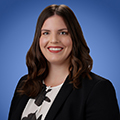Legislature Amends Civic Center Act to Authorize Charging Users a Proportionate Cost of Wear and Tear on Facilities

November 5, 2025
Number 47
Effective October 1, 2025, Assembly Bill (AB) 503 permanently restored the ability of school districts to include a proportionate share of the costs of facility maintenance and repairs in the fees charged to users of nonclassroom facilities and grounds. As urgency legislation, these changes to the Civic Center Act (Act) became effective immediately.
Background
The Act allows, and in some instances requires, school districts to charge “direct costs” to users of school facilities and grounds. Traditionally,” direct costs” included only a proportionate share of “operational direct costs,” which include the estimated costs of supplies, utilities, janitorial services, employee services and salaries, and certain administrative costs.
In 2012, in response to budget downturns, the Legislature passed Senate Bill (SB) 1404, which temporarily expanded the definition of “direct costs” to also include “capital direct costs,” meaning the costs of maintenance, repair, restoration, or refurbishment of district facilities and grounds. This allowed school districts to recoup some of the costs for wear and tear to district facilities caused by users, in addition to operational direct costs. This temporary authorization allowing districts to charge capital direct costs expired January 1, 2025.
Assembly Bill 503
As of October 1, 2025, AB 503 restores the ability of school districts to charge capital direct costs under the Act. According to the bill’s author, AB 503 recognizes the ongoing financial realities school districts face and provides a permanent, equitable funding mechanism by allowing school districts to charge for wear and tear users cause to district facilities.
Under the bill, school districts may choose to charge users a proportional share of their maintenance, repair, restoration, and refurbishment costs for nonclassroom space and school grounds, including playing fields, athletic fields, track and field facilities, tennis courts, and outdoor basketball courts. School districts cannot charge capital direct costs for use of classroom space. Users who provide classroom-based instructional activities, such as after-school programs and tutoring programs, can, at most, be charged operational direct costs under the Act.
Fees collected for operational direct costs are generally unrestricted funds. However, fees collected for capital direct costs must be deposited in a fund used exclusively for facilities maintenance.
Takeaways
The ability to charge for a share of the costs of wear and tear to district facilities and grounds may allow for a more equitable sharing of costs between school districts and facilities users, especially for those facilities that can be costly to maintain, such as athletic facilities and playing fields. School districts are encouraged to take this opportunity to review their facilities use policies and fee schedules to determine if any changes may be warranted in light of the passage of AB 503, to balance the needs of the district and community users.
If you have any questions about AB 503, facilities use policies, or the Civic Center Act in general, please contact the authors of this Client News Brief or an attorney at one of our eight offices located statewide. You can also subscribe to our podcast, follow us on Facebook and LinkedIn, or download our mobile app.
Number 47
Effective October 1, 2025, Assembly Bill (AB) 503 permanently restored the ability of school districts to include a proportionate share of the costs of facility maintenance and repairs in the fees charged to users of nonclassroom facilities and grounds. As urgency legislation, these changes to the Civic Center Act (Act) became effective immediately.
Background
The Act allows, and in some instances requires, school districts to charge “direct costs” to users of school facilities and grounds. Traditionally,” direct costs” included only a proportionate share of “operational direct costs,” which include the estimated costs of supplies, utilities, janitorial services, employee services and salaries, and certain administrative costs.
In 2012, in response to budget downturns, the Legislature passed Senate Bill (SB) 1404, which temporarily expanded the definition of “direct costs” to also include “capital direct costs,” meaning the costs of maintenance, repair, restoration, or refurbishment of district facilities and grounds. This allowed school districts to recoup some of the costs for wear and tear to district facilities caused by users, in addition to operational direct costs. This temporary authorization allowing districts to charge capital direct costs expired January 1, 2025.
Assembly Bill 503
As of October 1, 2025, AB 503 restores the ability of school districts to charge capital direct costs under the Act. According to the bill’s author, AB 503 recognizes the ongoing financial realities school districts face and provides a permanent, equitable funding mechanism by allowing school districts to charge for wear and tear users cause to district facilities.
Under the bill, school districts may choose to charge users a proportional share of their maintenance, repair, restoration, and refurbishment costs for nonclassroom space and school grounds, including playing fields, athletic fields, track and field facilities, tennis courts, and outdoor basketball courts. School districts cannot charge capital direct costs for use of classroom space. Users who provide classroom-based instructional activities, such as after-school programs and tutoring programs, can, at most, be charged operational direct costs under the Act.
Fees collected for operational direct costs are generally unrestricted funds. However, fees collected for capital direct costs must be deposited in a fund used exclusively for facilities maintenance.
Takeaways
The ability to charge for a share of the costs of wear and tear to district facilities and grounds may allow for a more equitable sharing of costs between school districts and facilities users, especially for those facilities that can be costly to maintain, such as athletic facilities and playing fields. School districts are encouraged to take this opportunity to review their facilities use policies and fee schedules to determine if any changes may be warranted in light of the passage of AB 503, to balance the needs of the district and community users.
If you have any questions about AB 503, facilities use policies, or the Civic Center Act in general, please contact the authors of this Client News Brief or an attorney at one of our eight offices located statewide. You can also subscribe to our podcast, follow us on Facebook and LinkedIn, or download our mobile app.
As the information contained herein is necessarily general, its application to a particular set of facts and circumstances may vary. For this reason, this News Brief does not constitute legal advice. We recommend that you consult with your counsel prior to acting on the information contained herein.






